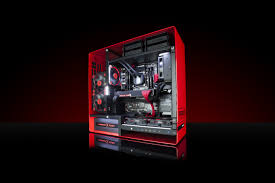A computer case, also known as a computer chassis, tower, system unit, or cabinet, is a case that contains most of the components of a personal computer (usually excluding the display, keyboard, and mouse). Housings are usually made of steel (often SECC - steel, galvanized, cold rolled, coil), aluminum and plastic. Other materials such as glass, wood, acrylic, and even Lego bricks appeared in the home made.



Currently the most popular form factor for desktops are ATX, microATX and small form factors have also become very popular for various purposes. In the high-end segment, the unofficial and poorly defined XL-ATX specification appeared around 2009. It extends the length of the motherboard to accommodate four graphics cards with dual-slot heatsinks. Some XL-ATX motherboards also increase the width of the motherboard, to allow more space for the CPU, memory PWM, and in some cases another CPU socket. Although the market share of these exotic motherboards is very low, almost all high-end enclosures and many mainstream enclosures support the XL-ATX. As of 2018, no major motherboard manufacturer has produced an XL-ATX board for several years. The E-ATX is similar to the XL-ATX in that it is larger than the ATX and is also poorly defined. Unlike the XL-ATX, E-ATX motherboards and cases are still in production, and support four-channel memory on 8 RAM slots, up to 4 PCI expansion slots for up to 4 dual-slot graphics cards and one processor such as the AMD Ryzen Threadripper 3990X